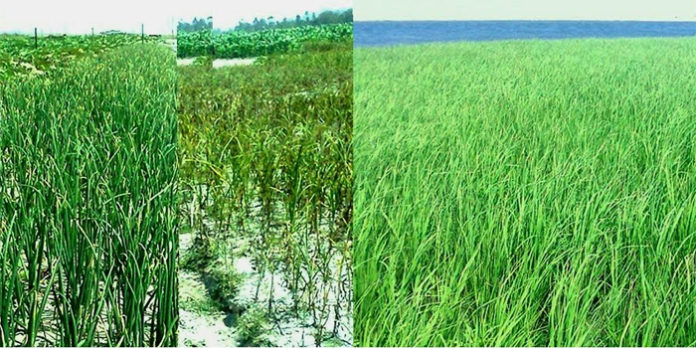RANGPUR, Feb 2, 2019 (BSS) – Expanded cultivation of various crops on char
lands and dried up riverbeds is bringing fortune to many farmers and landless
poor people living in riverine areas of Rangpur agriculture region.
Officials of the Department of Agriculture Extension (DAE) said cultivation
of crops on char lands is expanding every year during the dry season
following appearance of shoals as a result of drying up of riverbeds and
massive deposition of alluvial soils.
“The char people cultivated crops on 91,000 hectares of char lands and
dried-up beds in all five districts of Rangpur agriculture region this
season,” said Horticulture Specialist of DAE at its regional office here
Khondker Md. Mesbahul Islam.
The tender plants of various crops are growing superbly now on char lands,
shoals and silted- up beds of the Brahmaputra, Teesta, Dharla, Ghaghot,
Jamuna, Kartoa and other rivers and tributaries in the region giving those
lands greenish looks.
“The char and riverside people have mostly cultivated potato and other
vegetables, onion, green chili, garlic, maize, wheat, Boro rice, gourd,
groundnut, ‘kawn’, pulses, ’till’, tobacco, pumpkin, pulses, oil seed and
watermelon on these lands,” Islam said.
Harvest of mustard, onion and vegetables is nearing completion on the char
lands and dried up riverbeds though the process will begin for other
cultivated crops from March next to end by late May before commencement of
the rainy season.
Talking to BSS, Senior Coordinator (Agriculture and Environment) of RDRS
Bangladesh Mamunur Rashid said crop cultivation on char lands and silted-up
riverbeds is increasing in all five districts of Rangpur agriculture region
during the past three decades.
“About 18,000 char households, who are beneficiaries of different NGOs and
government organisations, cultivated pumpkin, other vegetables and crops in
over 220 villages of 22 upazilas in these five districts this season,” he
said.
River-eroded people Abul Kashem, Anwarul and Kobiza of village Paschim
Mohipur in Gangachara upazila here said some 25 families of the village have
cultivated pumpkin and other crops on the dried-up Teesta riverbed there this
year.
They said a farmer spent Taka 18,000 on an average each for cultivating
pumpkin on 200 raised sandbars this time to sell the produced pumpkin at
around Taka 42,000 to earn a net profit of Taka 24,000 after completing
harvest by March next.
“I have cultivated pumpkin, onion, garlic and vegetables on the dried-up
beds of the river Teesta to complete harvesting those by March next,” said
landless riverside farmer Abdur Razzaque of the same village.
Deputy Director of the DAE at its regional office Md Moniruzzaman said
cultivation of crops takes place on char lands and dried up riverbeds with
deposition of alluvial soil following adverse impacts of climate change and
other reasons.
Predicting a bumper production of crops cultivated on dried up riverbeds
and char lands this season in the region, Moniruzzaman, however, put emphasis
on reviving water flow in the rivers round the year to improve environment,
bio-diversity and ecology.



